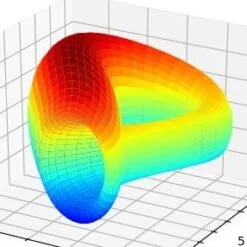What is Lido?
Lido is an open-source suite of software tools designed to enhance blockchain interactions on Ethereum, Solana, and Polygon networks. The core functionality of Lido enables users to mint transferable utility tokens that are linked to blockchain validation activities, allowing users to earn rewards for staking or validating data on these networks. These tokens, like stETH, are widely used in various on-chain activities, including DeFi (Decentralized Finance) and other smart contract protocols.
Lido primarily functions as a staking solution for Ethereum 2.0, but its innovative approach solves common problems in staking, such as liquidity and accessibility, making it a pivotal tool in the Ethereum ecosystem.
Lido’s Role in Ethereum 2.0 Staking
Ethereum 2.0 introduces a new consensus mechanism called Proof of Stake (PoS), where users can stake ETH to secure the network and earn rewards. However, traditional staking often comes with limitations, such as the inability to access or use staked assets for other purposes.
Lido solves this issue by making staked ETH liquid. Instead of locking up ETH for the duration of the staking period, Lido provides a tokenized representation of the staked ETH, allowing users to access liquidity while still earning staking rewards.
When you stake your ETH with Lido on the Ethereum Beacon Chain, you receive a token called stETH (staked ETH). This token represents your staked ETH on a 1:1 basis on the Beacon Chain, effectively bridging Ethereum 1.0 (ETH) and Ethereum 2.0 staking rewards.
How Does Lido Work?
- Staking with Lido: When you stake ETH using Lido, you receive stETH in return. This token represents your staked ETH and will accrue staking rewards over time.
- Staking Rewards: As your staked ETH generates rewards through Ethereum 2.0’s Proof of Stake mechanism, the corresponding stETH balance will grow, reflecting the daily accumulation of rewards.
- Daily Updates: Your stETH balance is updated once per day to reflect the rewards that have been generated. You can track and access the value of these staking rewards in real-time.
- Liquidity & Flexibility: stETH can be freely traded, spent, or used in various DeFi applications. It allows you to use your staked ETH while still participating in Ethereum 2.0 staking, making it a liquid staking solution.
- Redeemability: Once Ethereum 2.0 enables full transaction capabilities, users will be able to redeem their stETH for actual ETH, offering flexibility in managing your assets.
Key Features of Lido
- Liquid Staking: Lido provides a way for users to stake their ETH without losing access to it. By receiving stETH, users can still participate in DeFi, use stETH as collateral, or earn additional yields in other protocols while staking ETH on the Beacon Chain.
- DeFi Compatibility: stETH is compatible with DeFi platforms, making it a useful asset for decentralized lending, yield farming, and other financial services within the Ethereum ecosystem.
- Security and Accessibility: Lido’s staking infrastructure is designed to provide users with high security and scalability. It partners with several leading staking providers to ensure decentralized and secure operation of the staking process.
- Low Minimum Requirements: Lido allows users to stake any amount of ETH, unlike traditional staking that may require large minimum amounts (32 ETH). This makes staking accessible to everyone, from small retail investors to larger institutional players.
- Staking Rewards: By staking with Lido, users can earn rewards from the Ethereum network’s Proof of Stake system, enhancing the overall security and decentralization of the Ethereum blockchain.
Lido and DeFi: A Powerful Combination
Lido’s integration with DeFi makes stETH a valuable asset within the Ethereum ecosystem. Since stETH represents your staked ETH and is transferable, it provides a unique opportunity for users to:
- Earn Yield from Staking: Through Lido, users can earn staking rewards while still using their staked assets in other DeFi protocols.
- Use stETH as Collateral: You can use stETH as collateral for on-chain lending, borrowing, and other DeFi services, unlocking more value from your staked ETH.
- Participate in Yield Farming: Since stETH is supported by most DeFi platforms, it can be used to generate yield through various farming strategies, maximizing your staking returns.
Why Choose Lido for Ethereum 2.0 Staking?
- No Lock-Up Period: Traditional ETH 2.0 staking requires users to lock up their ETH for an undefined period. With Lido, users receive liquid stETH, meaning they can maintain access to their funds and utilize them in other ways.
- Low Fees: Lido aims to offer a competitive fee structure for its staking services, ensuring that users receive a significant portion of their staking rewards.
- Decentralization and Security: Lido works with a diverse set of industry-leading validators to ensure the highest standards of security and decentralization, preventing any single point of failure and ensuring the integrity of the Ethereum network.
- Easily Accessible: With no minimum staking requirement, Lido democratizes Ethereum staking, allowing anyone to participate regardless of the size of their holdings.
The Future of Lido
Lido is positioned to become a fundamental building block in the Ethereum DeFi ecosystem. With the ability to stake ETH while maintaining liquidity through stETH, users have unprecedented flexibility in managing their assets. As Ethereum continues to evolve with the full implementation of Ethereum 2.0, Lido will play a critical role in enabling liquid staking and providing users with more ways to earn rewards while supporting the network’s security and growth.




























Harran –
Good apps
Eyad –
ok
Bright Forson –
nice